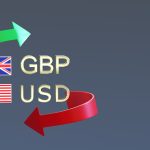Asian equities push beyond dismal economic indicators. Chinese indices fell behind their counterparts, undoing initial gain
Asian stocks bet on US Fed rate pause
On Wednesday, the majority of Asian equities marginally increased. As traders evaluated the likelihood of a halt in the Fed’s rate rise cycle for the month.
Although statistics revealed that the country’s trade surplus touched its lowest mark as of April 2022. Due to a significant decline in exports, China’s Shanghai Shenzhen CSI 300 and Shanghai Composite indexes trailed behind rivals, erasing initial gains.
Worries about how long this year’s economic recovery will last have also been heightened by a continuous fall in imports. As the country struggles with declining worldwide appetite for Chinese products.
On the other side, technology-heavy indices were notable day winners. Due to ongoing betting that the Fed would stop raising interest rates the next week. Backed by powerful technology stocks, the Taiwan Weighted index increased 0.7% Whereas the Hang Seng index increased 1.1%. KOSPI for South Korea increased 0.3 percent.
Most Asian Stocks seen a bit muted on still lingering global risks
However, concerns over the global economy’s deterioration kept mood towards risky Asian markets relatively subdued. Investors remain confronted with rates staying higher for a while. And a likely downturn in many parts of the world regardless of whether the Fed stops raising rates the following week.
After statistics revealed that the country’s economy barely expanded in the Q1 in 2023. Suffering by elevated rates of interest and inflation, Australia’s ASX 200 trailed behind its rivals for the bulk of part, climbing 0.2 percent.
Following the RBA’s interest rate rise on Tuesday, the ASX 200 was mostly supported by large Australian bank equities.
The Nikkei 225 and TOPIX indexes of Japan lagged for the day, falling 0.7% and 0.5%, each. As major profit taking occurred following recent trading sessions saw the indexes soar to 33-year peaks.
The equity markets had essentially priced in the fundamentals that fueled the Japanese stock boom. Including a dovish BoJ and a solid quarterly earnings season. Analysts queried if the surge still had any legs.
An updated Q1 GDP report that is anticipated on Thursday will provide the markets with further hints about the Japanese economy
Asia FX subdued with disappointing economic reports from China and Australia
On Wednesday, the majority of Asian currencies were little changed. As weaker economic reports about Australia and China dampened views on the Asia-Pacific region and the impending Fed meeting added to the pressure.
After statistics revealed that the nation’s trade surplus fell to a 13-month bottom in May. Mostly due to an unexpected decline in exports, the Chinese yuan erased its initial gains and remained unchanged.
In the Q1, the Australian economy barely expanded as a result of strain from elevated interest rates and inflation. And the Australian currency was unchanged.
But RBA Governor Philip Lowe’s remarks, which reaffirmed the local interest rates could be forced to increase higher. In order to curb hot inflation, provided some breathing room for the Australian dollar.
As a result of recent declines in the currency. Which fueled suspicion the the government might once more interfere with Fx markets to support the yen, the Japanese yen was a glaring performed better for the period, recovering 0.3% from close to 6-month lows as well.









